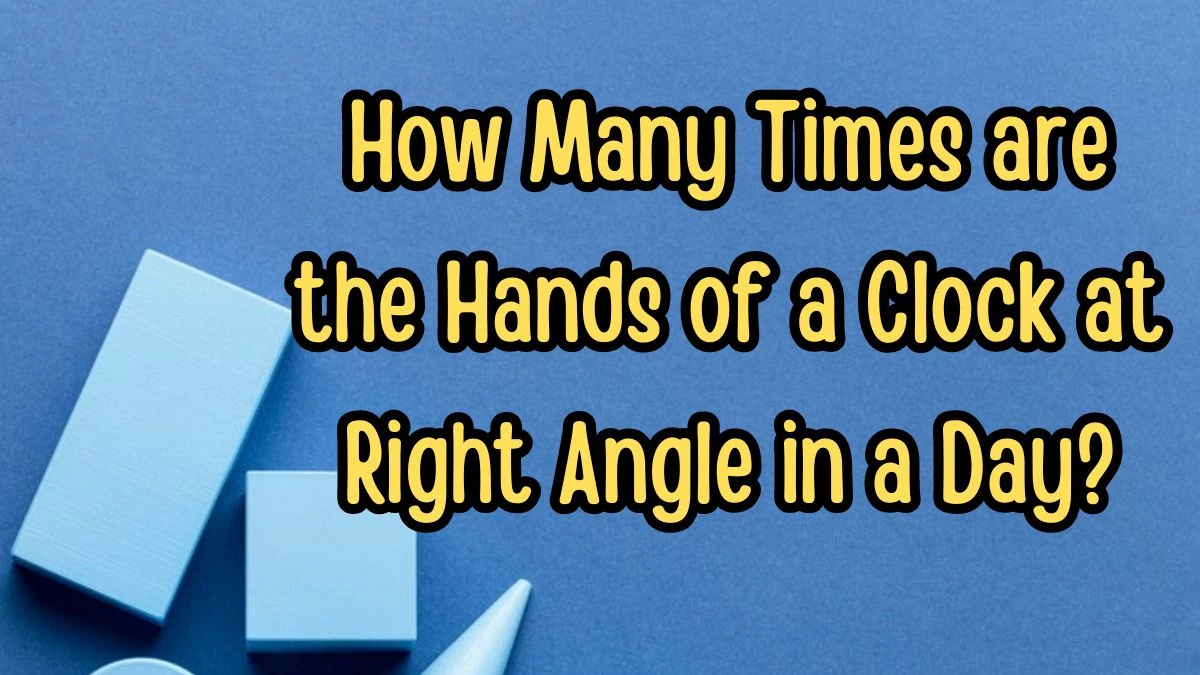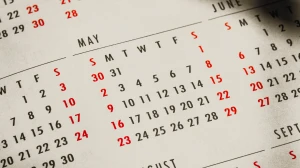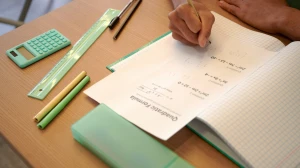How Many Times are the Hands of a Clock at Right Angle in a Day?
by
Updated Jun 03, 2024

How Many Times are the Hands of a Clock at Right Angle in a Day?
A clock has two hands, the minute hand, and the hour hand. These hands move continuously, marking the passage of time. Understanding how many times the hands of a clock form a right angle in a day involves looking at the movement of the minute and hour hands. The minute hand moves 360 degrees in an hour and 6 degrees in a minute, while the hour hand moves 30 degrees in an hour and 0.5 degrees in a minute.
To find the times when the hands of the clock are at a right angle, we start by considering the difference between the positions of the hour and minute hands. The first time they form a right angle is when the minute hand has moved away from the hour hand by 90 degrees.
Set up the equation: 6x=0.5x+90°, where x is the number of minutes.
Solve for x:5.5x=90° , x=180/11 minute
The next instance when the hands form a right angle is when the minute hand has moved 180 degrees away from the hour hand, resulting in a difference of 270 degrees between the hands.
Set up the equation: 6x=0.5x+270°.
Solve for x: 5.5x=270°, x = 540/11 minutes.
To calculate the total number of times the hands of the clock form a right angle in a day, we consider that there are 24 hours in a day, each containing 60 minutes.
There are 24 hours in a day, each with 60 minutes, totaling 24×60=1440 minutes.
Divide the total minutes in a day by the time interval between instances when the hands form a right angle:
(1440×11)/360= 44 times.
How Clock Hands Form Right Angles?
- A clock has two hands - the minute hand and the hour hand.
- The minute hand moves quickly, covering 360 degrees in an hour, while the hour hand moves slower, covering 30 degrees in an hour.
- Sometimes, the positions of the hands create a right angle, which is 90 degrees.
- We can calculate when these right angles occur by comparing the movements of the minute and hour hands.
- By solving equations involving the movements of the hands, we can determine the time intervals between instances where the hands form a right angle.
- By considering the total number of minutes in a day and dividing by the time interval between instances, we can find out how many times the hands form a right angle in a day.
Geometry of Right Angles in Clock Movements
Clocks have two hands - the minute hand and the hour hand. These hands move at different rates. The minute hand moves faster, while the hour hand moves slower. Sometimes, the positions of these hands create a right angle, which is a 90-degree angle. To understand when these right angles occur, we need to look at how the hands move.
The minute hand moves 360 degrees in an hour, while the hour hand moves 30 degrees in an hour. By comparing these movements, we can determine the intervals at which the hands form a right angle. We can calculate these intervals by setting up equations that compare the movements of the minute and hour hands. By solving these equations, we find out how much time passes between each instance where the hands form a right angle.
Once we know these time intervals, we can determine how many times the hands form a right angle in a day. By considering the total number of minutes in a day and dividing it by the time interval between instances, we find the total number of occurrences in a day.




